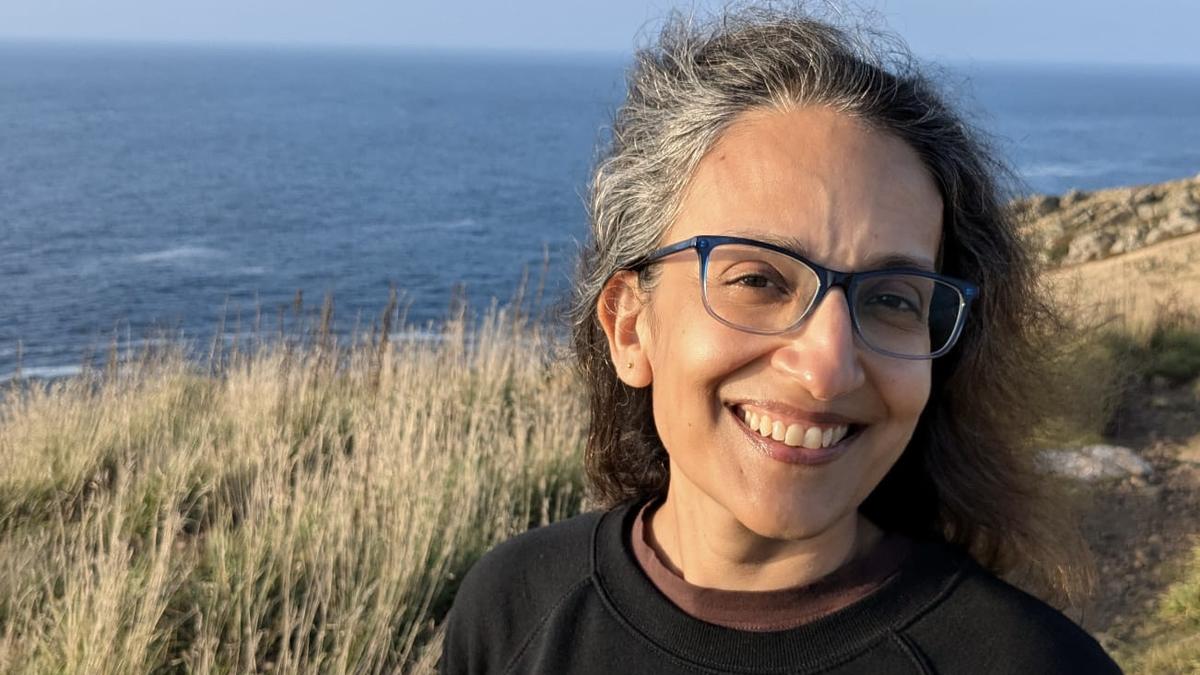
Mystery and myth-making in Mughal India | In conversation with Shandana Minhas, author of Ferdowsnama
The Hindu
Discover adventure and history in medieval India through Shandana Minhas' new novel, blending fantasy with vivid storytelling.
In 16th century Mughal India, four unlikely scouts set out on an imperial hunt through the length and breadth of the land, on the Great Moghul’s orders. What they uncover, about their mission and indeed, each other, forms the crux of Shandana Minhas’ new novel, Ferdowsnama (published by Penguin). Blending a tale of adventure with nuggets of history and wildlife, the Pakistani author, now based in London, paints a vivid picture of what it means to be a woman in medieval India. Edited excerpts from an interview:
A: I moved to a country where some people were more interested in where I came from than who I was. That got me thinking about it, too. Where are you really from? The nation state is a blink in time so I did an ancestry DNA test. Apart from the expected Punjab, the map of my body included Sindh, Kashmir, Uttar Pradesh and Tamil Nadu. I started reading ancient texts and books about regional history. I began looking at art. And it gripped me.
A: I try to meet the page without intention, but I can’t control what travels unseen. Yes, Ferdowsnama is fantastical rather than realist, but my thematic preoccupation remains life in an unequal world. The fantastical offers both writer and reader the chance to turn away from superficial reality and enter a space where you can see things in a way it might be unbearable to allow yourself to do outside a book. In ‘real’ life, it hurts to know someone is looking at you and thinking you are less worthy. In the imaginative realm, you can hold that knowledge without it burning you.
A: Some of the texts I read before writing Ferdowsnama were, of course, the Baburnama and Abul Fazl’s official records of Akbar’s reign. I also read translations of Somadeva’s Kathasaritsagara, the Devi Mahatmya, Ibn Battuta, and assorted collections and retellings of folklore, qissas, dastaans, etc. I should clarify that in the early stages I wasn’t reading these as research, I was reading for pleasure, out of curiosity, one text leading to another.
My world-building was also informed by what I was watching, which included the Netflix shows The Witcher and Tiger King. The ligers in Tiger King inspired one of the chapters. And a news story about the decimation of pangolin populations, so their scales can be used in traditional medicines, inspired another one. Animal welfare has also been a lifelong preoccupation. I can be a dispassionate observer of human nature, but I’ve never managed to tune out non-human suffering.
Underpinning all of these were my quickening memories of the land I’d left. The Thar desert in Sindh, where I spent two weeks shooting a film, and Sehwan Sharif, where I went for the annual urs... the imposing, otherworldly mountains and valleys in Pakistan’s northern areas, and the lunar beauty of Balochistan’s coastline and national park, through which I travelled for work and leisure. Vistas glimpsed through vehicle windows on long journeys — when I was a child, we also lived in Hyderabad [in Pakistan], and on holidays we would drive to Lahore. Every immigrant walks through their past while they walk towards their future.
A: I was in the British Library reading imperial memoirs. There were so many silences and spaces in the texts, where women’s voices should have been. I wished I could hear one. Then I read the opening of the surviving text of Gulbadan Begum’s Humayunnama: “In the name of God, the Merciful, the Compassionate! There has been an order issued. Write down whatever you know of the doings of Firdaus-makani and Jannat-ashyani…” — and suddenly I could. I could hear Ferdows.

It is not often that an election in the Thiruvananthapuram Corporation makes much news outside Kerala or even the capital. But the elections in 2020 were different as it culminated in the Communist Party of India (Marxist) [CPI(M)]’s Arya Rajendran becoming the youngest Mayor of the Corporation at the age of 21, an event which got attention far and wide. Now, five years later, an old tweet on that election by another young person in the running to be the Mayor of New York has gone viral.

 Run 3 Space | Play Space Running Game
Run 3 Space | Play Space Running Game Traffic Jam 3D | Online Racing Game
Traffic Jam 3D | Online Racing Game Duck Hunt | Play Old Classic Game
Duck Hunt | Play Old Classic Game










